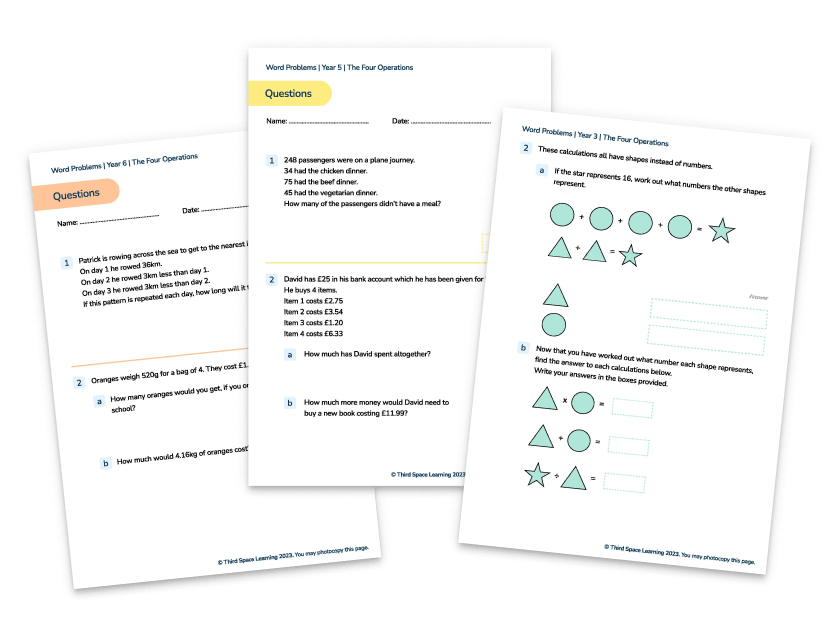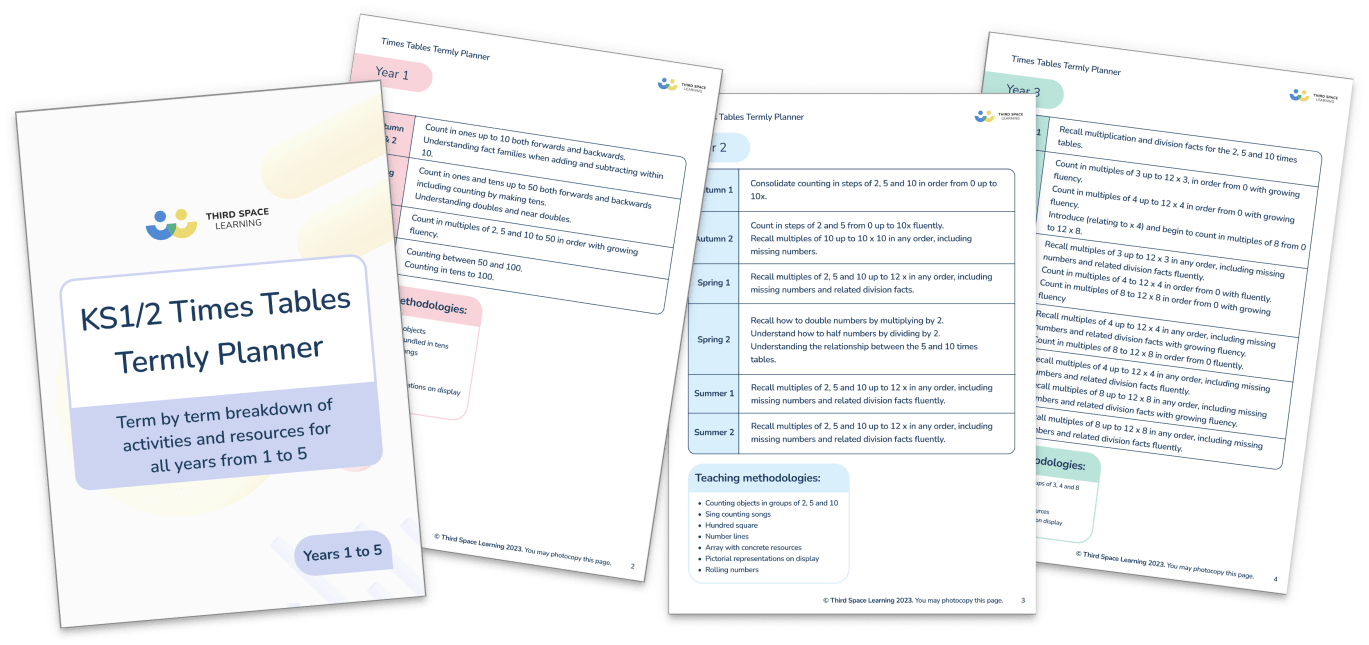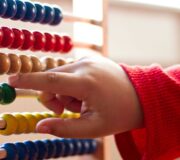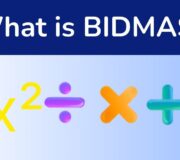Pupil Multiplication Tables Check (MTC): What School Leaders Should Know
The Multiplication Tables Check helps teachers and leaders determine which pupils know their times tables and can recall them fluently and which may need extra support. It is statutory for all Year 4 pupils registered at state-funded maintained schools or academies.
Due to the cumulative nature of maths, it’s important pupils have a strong grasp of their times tables and can recall them fluently. This helps them as they move on to more complex topics. The check is just that – a check, not a test. It’s part of the government’s plan to ensure all pupils have the foundational knowledge and skills they need to succeed at secondary school.
When is the Multiplication Tables Check 2026
The Multiplication Tables Check 2026, otherwise known as the Times Tables Check or MTC, is to be administered by schools between Monday 1st June and Friday 12th June 2025.
Any pupils absent in the first two weeks of June can sit the MTC the following week, Monday 15th June to Friday 19th June.
What is the Multiplication Tables Check?
The Multiplication Tables Check (MTC) is a KS2 assessment Year 4 pupils sit at the end of the school year.
Pupils sit the Multiplication Times Tables Check online. They are asked 25 questions on the 2 to 12 times tables. For every question, you have 6 seconds to answer, and in between the questions, there is a 3-second rest. Questions are generated randomly based on the rules of the MTC, but the 6, 7, 8, 9, and 12 times tables are most frequent.
What is the Multiplication Tables Check assessment framework?
It aims to provide guidance to the test developers to help them develop fair and robust tests, but it also provides an excellent guide to what schools and teachers will be expected to have taught their pupils by the time they sit their Year 4 Multiplication Tables Test.
So from the framework we have distilled the 20 key facts you need to know about the Year 4 Multiplication Tables Check.
If you’re a primary school teacher or school leader looking to support parents to understand the Multiplication Tables Check (commonly referred to as the times table check) we have a free downloadable resource to help you; the Multiplication Tables Check Presentation For Parents is ready to go as is or adaptable for the needs of your school.

Unlimited primary maths tutoring with Skye, the voice-based AI maths tutor.
Built on the same principles, pedagogy and curriculum as our traditional tutoring, but with more flexibility, reach and lower cost.
Join the schools already helping hundreds of primary pupils nationwide with Skye’s one to one maths tutoring.
Watch Skye in action20 key facts you need to know about the MTC – Multiplication Tables Check
1. The times tables check is online and on-screen
The test is fully digital and takes place on screen. It is available to use on laptops, desktops and tablets.
The STA has published full guidance for your IT administrators, but it is expected that most equipment that has access to a web-browser should work with the check.
2. Schools have access to a simulated version to practise on
The Department For Education provides a ‘try it out area’ to familiarise schools and pupils with the system and to try out practice questions before the official check.
During this time schools can apply any necessary accessibility features for pupils that may need them. Pupils should try these features out ahead of the check window to ensure they work for them.
3: The MTC only presents children with multiplication statements, not division
Year 4 children only face multiplication statements in the check. This means that related division facts, whilst a key part of children’s mathematical learning, are not be tested as part of the check.
Some maths experts are already saying that this removes much of the potential benefits of the check.
4: The check takes place in June each year
There is always a two-week window in June for the administration of the check. There is no set test day, nor an expectation that all children will take the check at the same time.
5: Children can practise before taking the check
Before the test window opens each year, there is the opportunity for children to access a practice area to become familiar with the style of the KS2 times tables test.
It’ll be important for schools to ensure they build in time for this familiarisation, so the check style is not ‘new’ when children take the actual check.
The results from the practice area will not be reported on or available to schools, so this cannot be used as an ongoing tool for assessment before the actual check.
6: It takes less than 5 minutes per pupil
Under standard administration (i.e. without any access arrangements), the multiplication check takes less than 5 minutes per pupil. There is no requirement for all children in a class to take the check all at once.
7: Children have 6 seconds to answer each question
Children get 6 seconds from the time the question appears to input their answer. This means that children must be able to read, recall and enter their response within 6 seconds.
Children enter their answer using a keyboard or by pressing digits using a mouse or touchscreen on an on-screen number pad.
This means that it is vital that schools ensure children can rapidly recall multiplication facts, and can do so ‘out of sequence’ (i.e. answer 6 x 7 without having to count in 6’s from 0).
Whilst it may be tempting for schools to resort to ‘rote learning’ for the multiplication tables, it is important that this is avoided, as it leads to children simply being able to chant facts without any meaning, and reduces their ability to recall facts out of sequence.
During our online one-to-one tuition lessons, Third Space Learning aims to go beyond rote learning, helping students to gain a deep understanding of maths concepts. Tailored to the needs of each individual student, our AI maths tutor works to close learning gaps and give students more confidence in maths.
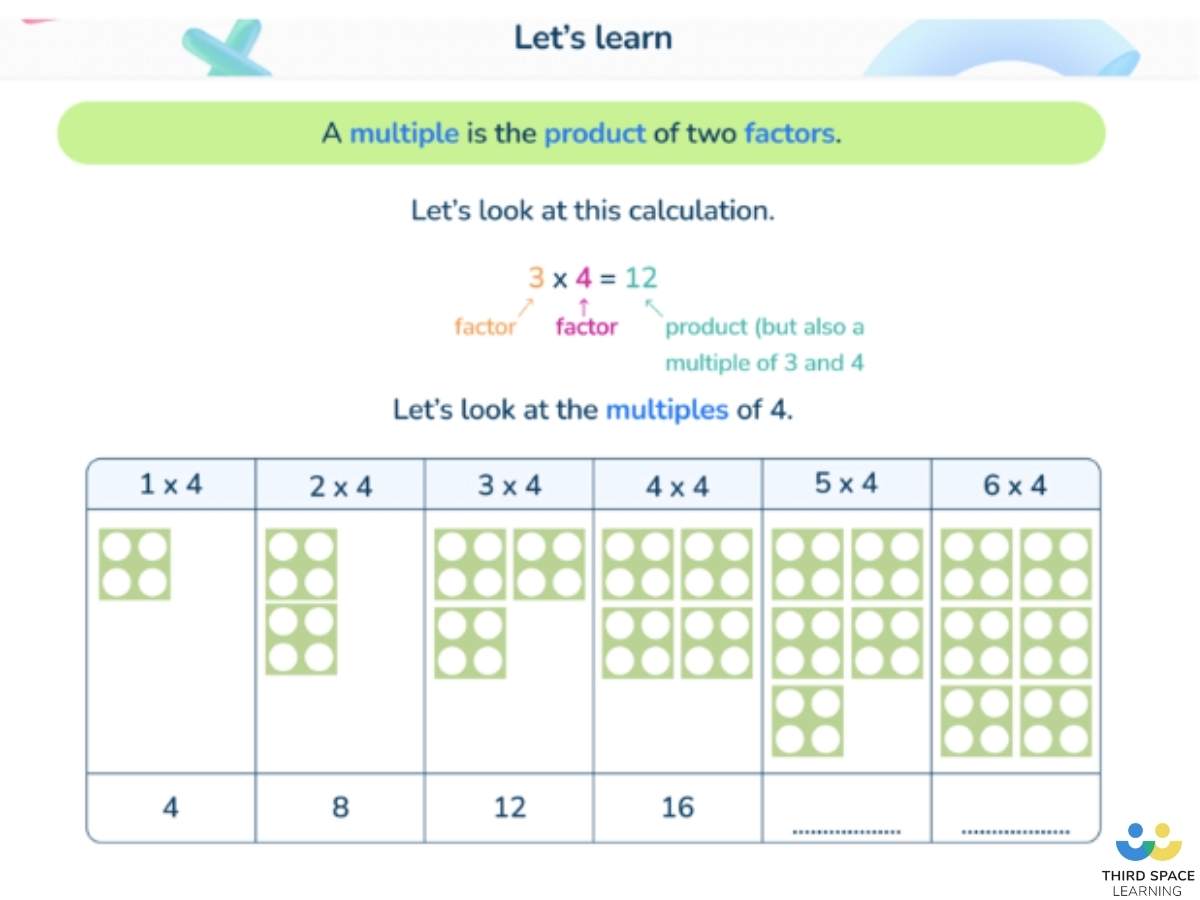
When teaching times tables, if children are conceptually taught multiplication and are supported to make, understand and use the relationships and links within multiplication, they will gain the ability to rapidly recall their multiplication facts. They will be able to use them to help them calculate in other areas of maths as well.
As the facts have to be read by the child (rather than being read to them), it is also important that children are used to giving the correct answer to multiplication questions in a written format, rather than only answering questions out loud when they are read out to them.
KS1 & KS2 Times Tables Termly Planner
Download this free term by term breakdown of National Curriculum expectations for times tables in KS1 & 2. Includes strategies and methodologies for teaching tables in every primary school year.
Includes online resources bank for practice in the classroom
8: Whatever is in the answer box at the end of the 6 seconds is counted as the answer
This means that if a child is midway into entering a two-digit answer (e.g. they only enter the 7 out of 72 when answering 8 x 9) they will be recorded as having answered 8 x 9 as 7.
9: Children face 25 questions
The number of questions has been confirmed at 25. Children are presented with 25 questions with a 3 second pause in-between each question, before the next one appears on screen.
It is therefore important that children have been used to answering (at least) 25 questions in quick succession before they face the test.
Each child is be randomly assigned a set of questions, which the STA refer to as a ‘form’. This is the spread of questions.
There will be repeated questions across different sets of questions each year, but no more than 30% of the questions will be the same in any two sets of questions. This means if the test gets interrupted and children need to re-start it, they will only have a minimal advantage.
10: There will not be an equal spread of each multiplication table within the check
The check has been designed to focus on times tables that fit within the KS2 national curriculum.
It is therefore important to ensure that your Year 4s and Year 3s develop fluency in their multiplication facts. Remember, the curriculum suggests that by the end of Year 3, children should be fluent in the 2, 3, 4, 5, 8, 10 times tables, and then by the end of Year 4 it’s those tables plus the 6, 7, 9, 11, 12.
- The 6, 7, 8, 9 and 12 times tables are more likely to be asked than the 2, 3, 4, 5, 10 or 11 multiplication tables. The STA state that there is a focus on these as these are the ‘most difficult’ multiplication tables.
- There will always be questions from the 3, 4, 5, 6, 7, 8, 9, 11 and 12 multiplication tables in each test.
- There will be no questions from the 1 times table (i.e 1 x 8 or 8 x 1)
- There will only be a maximum of 7 questions from the 2, 5 and 10 times tables.
Reversal of questions using the commutative law will not feature in the same check. This means that, for example, 8 x 3 and 3 x 8 won’t be asked to the same pupil.
The full breakdown of questions can be found in the table below:
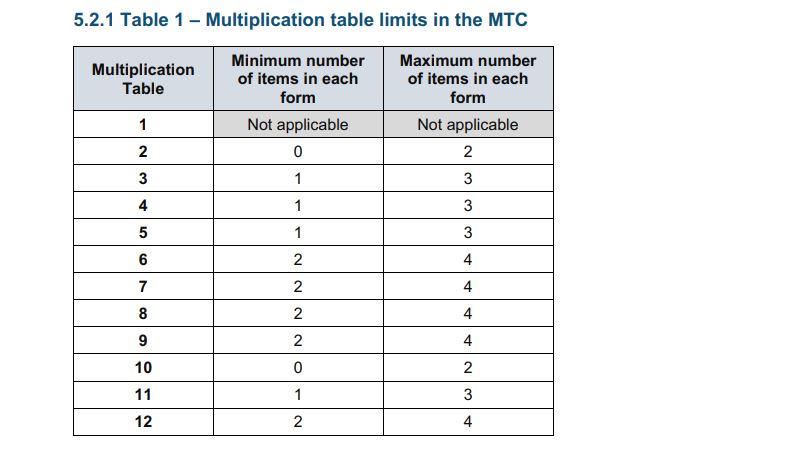
11: 6 x 3 is ‘6, three times’
The STA state that they are classifying the multiplication tables by the first number in the question. For example, 8 x 3 would fall within the 8 times table.
This reflects what is now considered to be best practice – for example, that 8 x 3 should be thought of as 8, three times rather than 8 lots of 3.
12: Remember, commutativity is really important
Of course, it is important that children understand the commutative property of multiplication, and that 8 x 3 (8, three times) is the same as 3 x 8 (3, eight times.)
Therefore, if children have made this conceptual connection, it effectively reduces the number of unique facts children need to remember, and helps children answer questions such as 8 x 4, which if taken as an 8 times table question may cause more panic than 4 x 8.
13: Eleven facts are more likely to appear than others
The framework sets out that the second number in the multiplication will be monitored to ensure that the instances of each number is +/- 1 of the parameters discussed above.
This means that the following 11 multiplication questions (and their commutative equivalents) are more likely to be asked: –
- 6 x 6, 6 x 7, 6 x 8, 6 x 9, 6 x 12
- 7 x 8, 7 x 9, 7 x 12
- 8 x 9, 8 x 12
- 12 x 12
Of course, not each set of questions will feature all of these facts, and other questions will be asked, but it is likely that a good proportion of the above will be present in each set of questions.
Questions involving 2, 5 and 10 are least likely to be asked, with there only being a maximum of 8 (including the +/-1 parameter mentioned above) of these questions in each test.
Remember, the key to teaching times tables and multiplication is to teach it conceptually right from Key Stage 1. Third Space Learning has lots of advice on how to do this, following a whole-class maths mastery approach. Here’s where you can start:
14: Some children can be withdrawn from the assessment
It is possible to withdraw certain children from the assessment.
Some pupils may be withdrawn from the assessments. Further details are provided in the ARA. However, the grounds for withdrawal are stricter than grounds for withdrawing from the SATs tests.
Pupils should not take the check if they:
- are absent during the entire 3-week check period
- are unable to access the check, even when using access arrangements
- are working below expectation for year 2 in multiplication tables and are considered unable to answer the easiest questions
- have just arrived in school during the check window, with EAL, and there is not
- enough time to establish the standard at which they are working
- have been incorrectly registered for the check
15: Strictly speaking, the check should not be used as a diagnostic tool
The STA are clear that the check has not been developed for schools to use a diagnostic tool. However, of course, schools can use the check to help identify KS2 pupils who require additional support.
As it has not been designed as a diagnostic tool, it means that there may be gaps in children’s understanding and knowledge of multiplication that is not picked up by the check.
16: Results are only be available at the end of the 3-week window
You can only access the result for each pupil at the end of the 3-week window. The child (or teacher) is not be shown the total score on screen. This means there is a bit of a waiting game to find out how your children have done.
17: There is no ‘Pass’ rate or threshold
The guidance is clear that there is no expected pass rate or threshold. This means that, unlike the KS1 Phonics Screening check, children are not be expected to re-sit the check if they do not meet a set threshold in this KS2 Times Tables Test.
BUT…
18: National and Local Authority results are also be published
The DfE now reports on the performance of pupils in the check nationally and in each local authority. The data is also be made available through Analyse School Performance (ASP).
The STA state that this national and local authority data enables schools to benchmark the performance of their pupils, but it does not form a formal pass mark.
Here are the results from 2022 that are typical of most years.
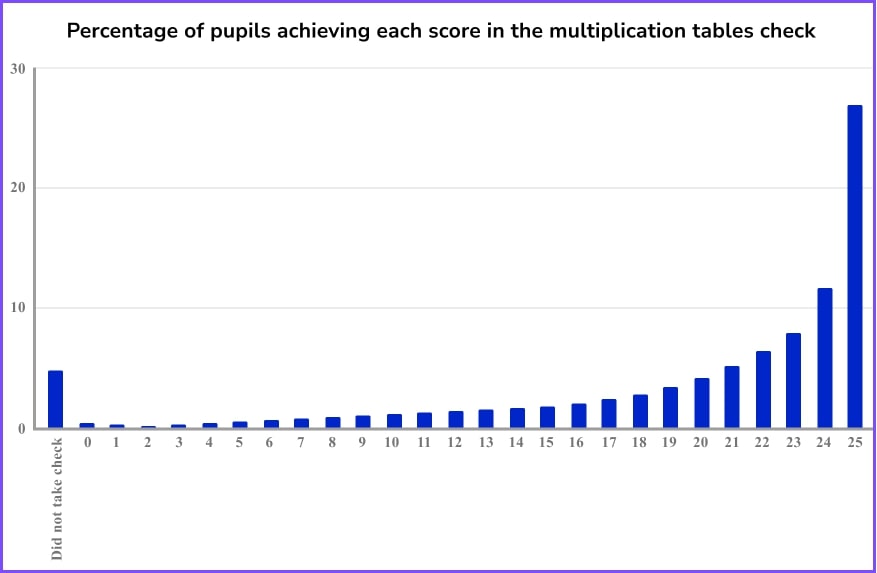
In 2022, the mean average score of pupils taking the MTC was 19.8. The most common score was 25 (full marks), with 27% of pupils achieving this. In 2023, the trend continued and 29% of pupils achieved 25. The mean average score of pupils increased 0.4 points to 20.2.
The multiplication tables check attainment data included statistics for pupils:
- at national level, broken down by the pupil characteristics such as gender, disadvantage, free school meal eligibility, etc.;
- at national level, broken down by school characteristics, such as school type, school phase and school religious character;
- at regional and local authority level, broken down by gender.
19: Results of the multiplication tables check are not be published in performance tables
The check will not be published in the publicly accessible school performance tables. There are no current plans to use the results from the multiplication check in judging if schools meet the ‘floor standard’.
BUT…
20: Results of the MTC will be reported and analysed – including by Ofsted
School and individual pupil-level reports are made available to schools – in a similar way to the results from the KS1 Phonics Check are reported. This means that schools can target support and intervention where needed.
It is also important to note that the results are also available to Ofsted and local authorities through ASP (Analyse School Performance), so it is likely that schools will face questions about the Multiplication check during an Ofsted inspection.
Source: Multiplication Tables Check (gov.uk)
So, there you have it. Those are the 20 key facts that all school leaders and maths coordinators should know about the new Multiplication Tables Check this year and beyond.
Looking for more resources and ideas to prepare your pupils for the Multiplication Tables Check? Check out below:
- Times Table Grids
- Times Tables Worksheets
- Times Tables Games
- 5 Free Times Tables Tests for every year group (with self assessment)
- Helping Learn Times Tables At Home
From the framework: The purpose of the MTC is to determine whether year 4 pupils can fluently recall their multiplication tables. Although the check helps schools to identify pupils who require additional support, it is not intended as a diagnostic tool.
All eligible Year 4 pupils who are registered at maintained schools, special schools or academies (including free schools) in England will be required to take the MTC test.
The Multiplication Tables Check was optional in 2021 and has been compulsory for year 4 pupils at primary school since 2022.
It was available as a voluntary check in the 2018/19 academic year and actually became statutory from from the 2019/20 academic year but schools were not required to take it because of school closures in the summer term of 2020.
There is no pass mark and children are not be required to resit the test if they don’t get a high enough score.
DO YOU HAVE STUDENTS WHO NEED MORE SUPPORT IN MATHS?
Skye – our AI maths tutor built by teachers – gives students personalised one-to-one lessons that address learning gaps and build confidence.
Since 2013 we’ve taught over 2 million hours of maths lessons to more than 170,000 students to help them become fluent, able mathematicians.
Explore our AI maths tutoring or find out about online maths tuition for your school.
